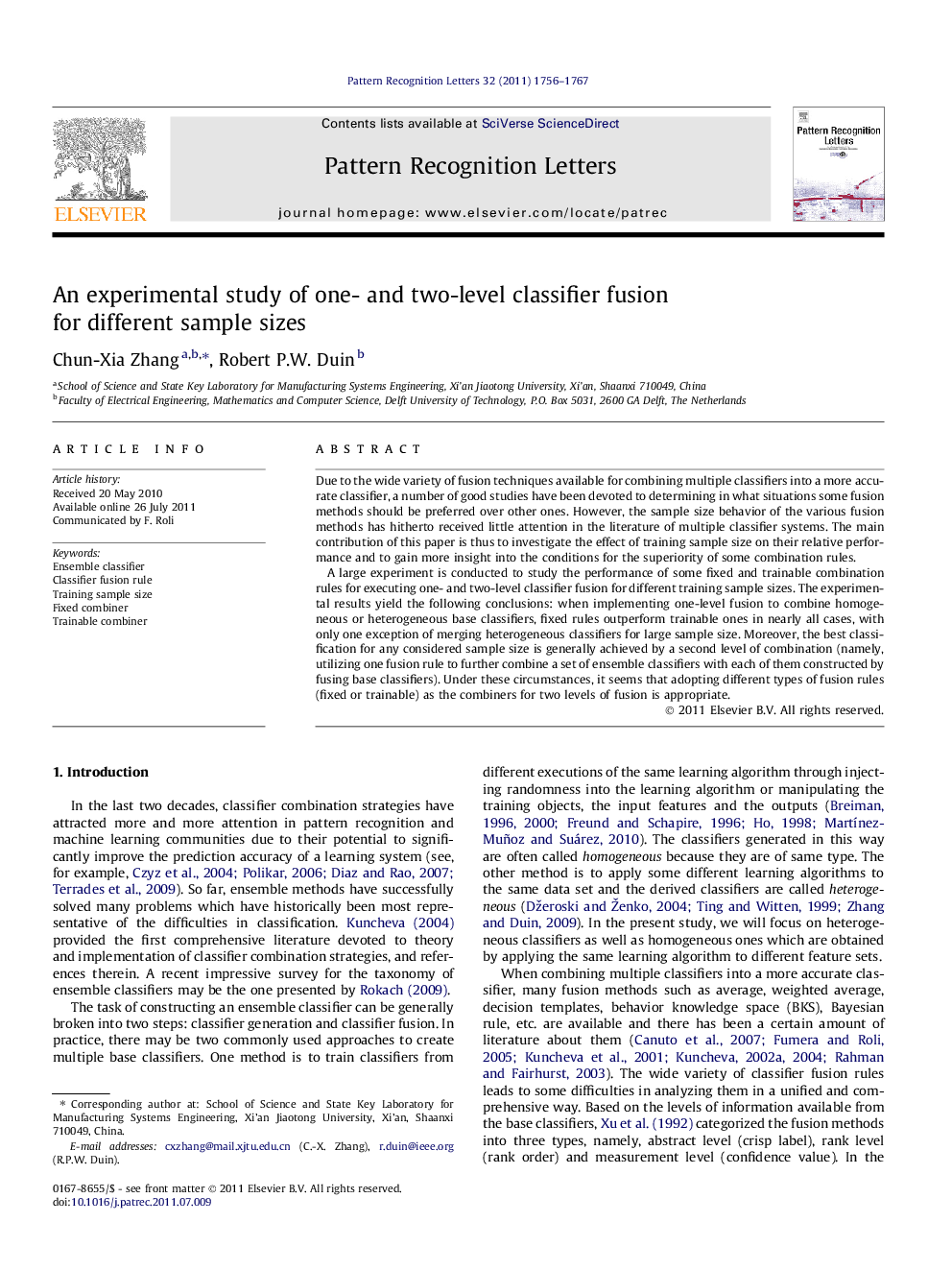| Article ID | Journal | Published Year | Pages | File Type |
|---|---|---|---|---|
| 535934 | Pattern Recognition Letters | 2011 | 12 Pages |
Due to the wide variety of fusion techniques available for combining multiple classifiers into a more accurate classifier, a number of good studies have been devoted to determining in what situations some fusion methods should be preferred over other ones. However, the sample size behavior of the various fusion methods has hitherto received little attention in the literature of multiple classifier systems. The main contribution of this paper is thus to investigate the effect of training sample size on their relative performance and to gain more insight into the conditions for the superiority of some combination rules.A large experiment is conducted to study the performance of some fixed and trainable combination rules for executing one- and two-level classifier fusion for different training sample sizes. The experimental results yield the following conclusions: when implementing one-level fusion to combine homogeneous or heterogeneous base classifiers, fixed rules outperform trainable ones in nearly all cases, with only one exception of merging heterogeneous classifiers for large sample size. Moreover, the best classification for any considered sample size is generally achieved by a second level of combination (namely, utilizing one fusion rule to further combine a set of ensemble classifiers with each of them constructed by fusing base classifiers). Under these circumstances, it seems that adopting different types of fusion rules (fixed or trainable) as the combiners for two levels of fusion is appropriate.
► We study how training sample size affects the relative advantage of some classifier fusion rules. ► The conditions for the superiority of these fusion methods are investigated. ► Fixed rules outperform trainable ones if executing one-level of combining classifiers. ► The best result for any training sample size is achieved by a two-level classifier combination.
